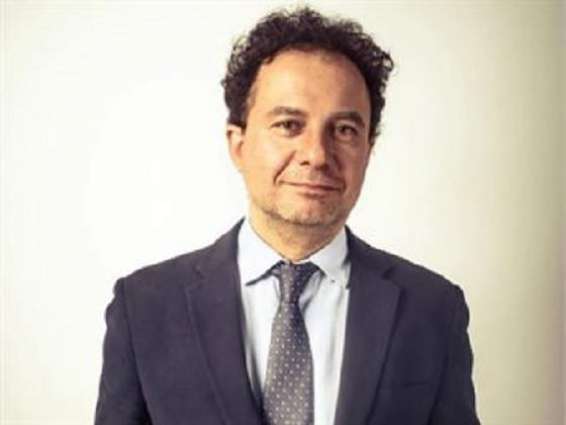The recovery of the Italian economy will be impossible unless the government changes its strategy and focuses more on long-term investments rather than short-term solutions in its plan on how to spend the funds from Next Generation EU, Michele Geraci, Italian economist and former undersecretary of state at the Italian Ministry of Economic Development, told Sputnik
GENOA (Pakistan Point News / Sputnik - 12th January, 2021) The recovery of the Italian economy will be impossible unless the government changes its strategy and focuses more on long-term investments rather than short-term solutions in its plan on how to spend the funds from Next Generation EU, Michele Geraci, Italian economist and former undersecretary of state at the Italian Ministry of Economic Development, told Sputnik.
The Italian government has been in a crisis over the last few weeks, as the parties cannot come to a consensus on the National Recovery and Resilience Plan (PNRR), which should specify how Italy is going to administer funds that it is going to receive from the European Union. Italy is expected to receive some 209 billion Euros ($254 billion) from the Next Generation EU recovery instrument to cope with the consequences of the coronavirus pandemic, which is more than any other EU member state. Italy is expected to present its recovery plan for approval to Brussels in April.
"The true recovery is not going to happen easily because we haven't really focused on how to spend the money. In fact, the risk is that we do access this loan and then we will be left with the debt without gaining the growth because no focus has been put into what to do with the money. I fear this is the biggest risk for Italy ending up with higher debt and missing this opportunity," Geraci said.
Geraci specified that the money that Italy is going to receive from the European Union is in any case generated by the capital markets.
"There is nothing new in the fact that now the money is borrowed instead of being received via the investment banks. ... So, the money really comes from the same source just via a different path. Therefore, the recovery fund is pretty much a loan like the debt that Italy has, and we have been discussing a lot about whether we should do it or not, whether we should open this line of credit with the European Union, whether we should resort to the ESM [European Stability Mechanism], but very little has been discussed what to do with the money," Geraci continued.
The draft of the recovery plan prepared by the finance minister has not been made public. Moreover, members of the cabinet, ministers, received it only on Monday evening for consideration. On Tuesday evening, the Council of Ministers will meet to discuss the draft.
Matteo Renzi, the former prime minister and leader of the Italia Viva party that is part of the governing coalition led by Giuseppe Conte, has been the most outspoken critic of the prime minister's recovery plan, threatening to withdraw from the coalition and potentially send the government to a collapse. On Monday, however, Italian media reported that President of the Republic Sergio Mattarella might have interfered by calling for the approval of the recovery plan.
"To be honest, I don't see a path to recovery because I think at the moment there is really no leadership in doing things that the country needs. When you ask me when is the recovery going to happen, my answer is that it's going to be when people who deliver come to power. We really need to have people who take the plan to its completion, to execution," Geraci said.
Former government official predicts at least a 10-percent GDP fall in 2021, which is the biggest drop in the modern history of Italy.
"Next year, if things get better, which I don't think they will, it's not just going to be the consumption that we need to work on, but also the supply. And we already have almost 400,000 enterprises that are closing down, so that's about 10 percent of the overall number of small and medium enterprises in Italy going bankrupt," Geraci said, adding that if 15-20 percent of suppliers disappear from the market, it will be very hard for the economy to recover because they will also pull down whole value chains.
According to the guidelines for the National Recovery and Resilience Plan, published by the Department for European Policies, the main priorities for spending are going to be an ecological transition, digitalization and innovation.
Geraci warned that without a solid long-term investment plan, Italy risks further increasing its significant public debt and finding itself trapped in austerity policies afterward.
In March 2020, the European Union suspended its fiscal rules intending to help countries cope with COVID-19 consequences. This will not last forever, Geraci noted.
"The [public] debt is indeed a very big problem for Italy and I expect it will grow up by another 20 [or] 25 points. So we are looking at around 160 [percent] of debt to GDP, which is very, very high, it's almost the level of Greece in 2011 when Greece was forced to accept the EU rescue package. I think this would be a big problem because while the fiscal compact is now suspended in Europe, so a country can go over the three-percent-deficit ceiling, this is only temporary, and in the next year this ceiling will be reimposed again, and of course, this is where Italy will pay the price for having wasted a year, the year of waiver of deficit and loose fiscal policy," Geraci said.
The economist suggested that Italy's public debt will grow further in 2022.
"In 2022, when I expect the rule of the EU and Maastricht to go back in, Italy will be left with 170 percent of debt without having gained the opportunity to do what we could have done. This is the biggest fear that I have - more debt without a corresponding growth," he continued.
The Italian public debt stood at 135 percent of the GDP in 2019, according to Eurostat.
"I saw the budget law that the government issued at the end of December. It's all little money, subsidy here, subsidy there, which is fine for certain short-term issues, to avoid crisis, but it has nothing about the future growth," Geraci said.
The reason for such a lack of long-term growth strategy lies in the Italian electoral system and the fact that governments change too frequently, according to Geraci. Not having certainty in keeping their posts even in several months' time, politicians tend to focus on gaining popular support with quick solutions.




